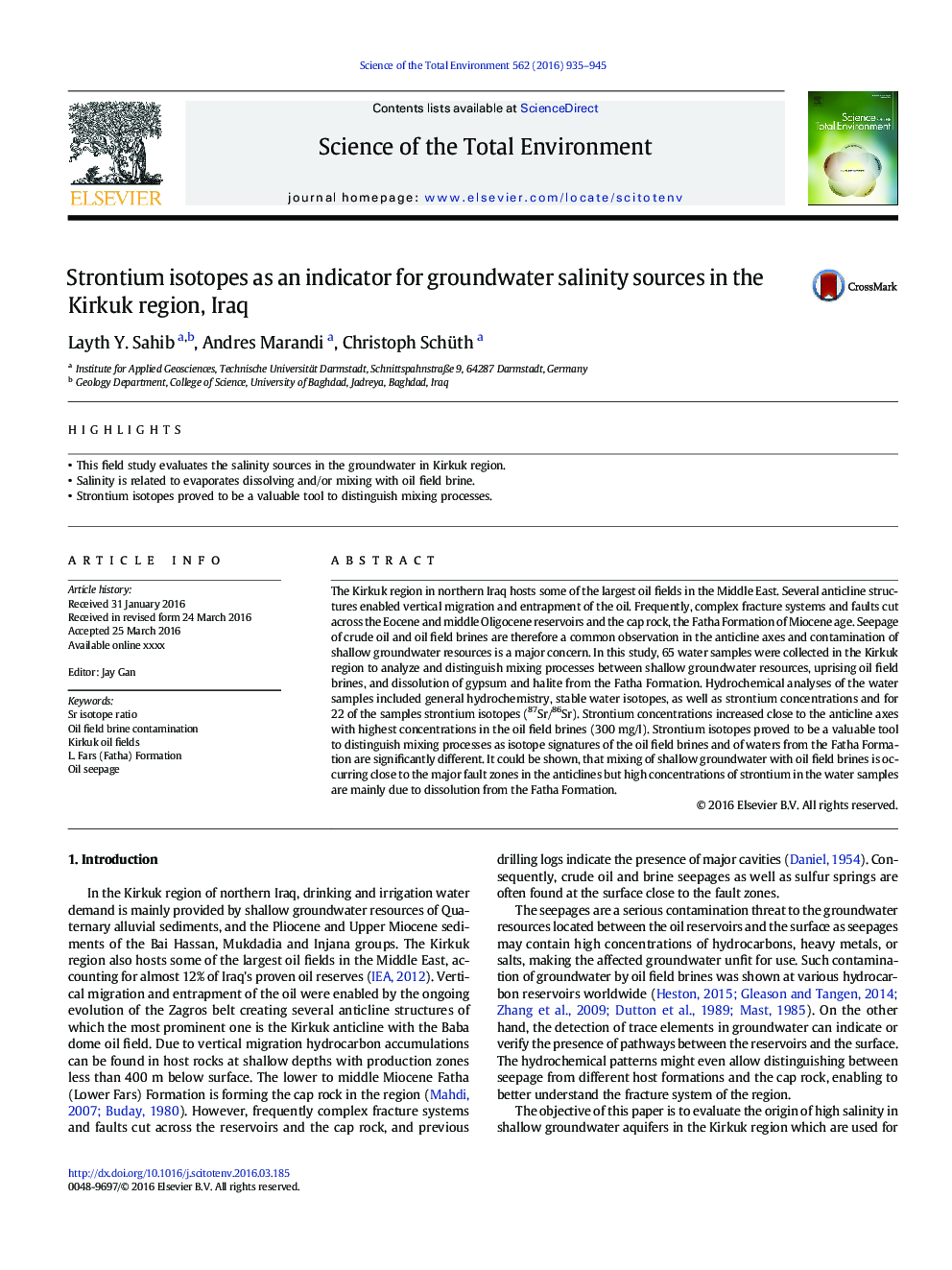| کد مقاله | کد نشریه | سال انتشار | مقاله انگلیسی | نسخه تمام متن |
|---|---|---|---|---|
| 6321885 | 1619726 | 2016 | 11 صفحه PDF | دانلود رایگان |
عنوان انگلیسی مقاله ISI
Strontium isotopes as an indicator for groundwater salinity sources in the Kirkuk region, Iraq
ترجمه فارسی عنوان
ایزوتوپهای استرونتیوم به عنوان شاخص برای منابع شوری آب زیرزمینی در منطقه کرکوک عراق
دانلود مقاله + سفارش ترجمه
دانلود مقاله ISI انگلیسی
رایگان برای ایرانیان
کلمات کلیدی
موضوعات مرتبط
علوم زیستی و بیوفناوری
علوم محیط زیست
شیمی زیست محیطی
چکیده انگلیسی
The Kirkuk region in northern Iraq hosts some of the largest oil fields in the Middle East. Several anticline structures enabled vertical migration and entrapment of the oil. Frequently, complex fracture systems and faults cut across the Eocene and middle Oligocene reservoirs and the cap rock, the Fatha Formation of Miocene age. Seepage of crude oil and oil field brines are therefore a common observation in the anticline axes and contamination of shallow groundwater resources is a major concern. In this study, 65 water samples were collected in the Kirkuk region to analyze and distinguish mixing processes between shallow groundwater resources, uprising oil field brines, and dissolution of gypsum and halite from the Fatha Formation. Hydrochemical analyses of the water samples included general hydrochemistry, stable water isotopes, as well as strontium concentrations and for 22 of the samples strontium isotopes (87Sr/86Sr). Strontium concentrations increased close to the anticline axes with highest concentrations in the oil field brines (300Â mg/l). Strontium isotopes proved to be a valuable tool to distinguish mixing processes as isotope signatures of the oil field brines and of waters from the Fatha Formation are significantly different. It could be shown, that mixing of shallow groundwater with oil field brines is occurring close to the major fault zones in the anticlines but high concentrations of strontium in the water samples are mainly due to dissolution from the Fatha Formation.
ناشر
Database: Elsevier - ScienceDirect (ساینس دایرکت)
Journal: Science of The Total Environment - Volume 562, 15 August 2016, Pages 935-945
Journal: Science of The Total Environment - Volume 562, 15 August 2016, Pages 935-945
نویسندگان
Layth Y. Sahib, Andres Marandi, Christoph Schüth,
